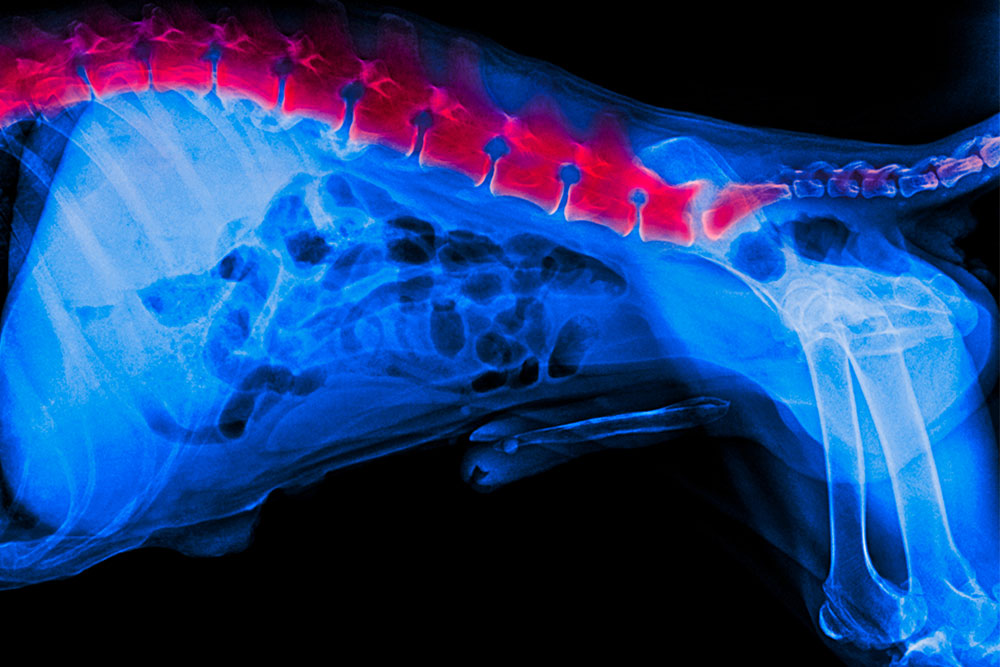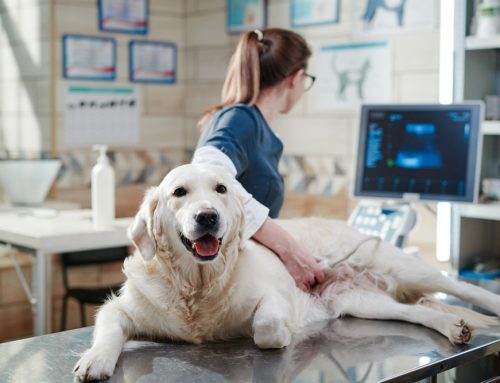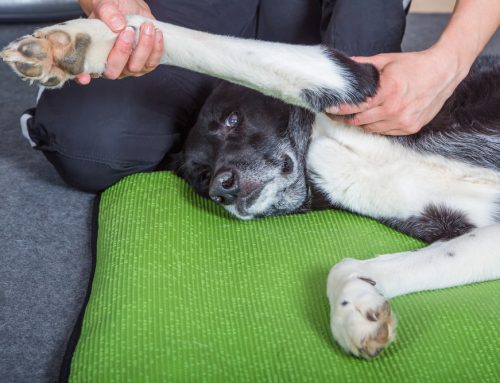Aging humans deal with aches and pains, and our pets are the same. One source of such pain is intervertebral disc disease (IVDD), a process that damages the spinal discs or causes their degeneration. The discs are meant to cushion spaces between vertebrae and allow for various spinal movements, but they can cause pain and reduced mobility when damaged.
IVDD signs can be vague and pet owners may struggle to identify their pet’s problem until the pain has progressed or they develop neurological dysfunction. The Neighborhood Veterinary Centers Nederland team wants to raise awareness about this disease, so pet owners can take action at the first signs of a problem.
Intervertebral disc disease in dogs
IVDD is a chronic degenerative process in the cartilage-like discs between vertebrae that provide cushioning for ease of movement. Research shows that two main disease types exist—Hansen type I and Hansen type II. Type I IVDD affects chondrodystrophic dog breeds (i.e., those with a genetic cartilage defect often associated with a long back and short legs). Degeneration generally starts in these dogs at an early age, and the inner gel-like disc material becomes calcified and hard. At some point, the outer disc material tears, and the inner material herniates into the spinal canal, pushes on the spinal cord, and causes neurological problems. This usually occurs suddenly following a trivial movement.
Type II degeneration, which generally affects large breeds and middle-aged and older dogs, occurs slowly, usually with no sudden herniation, although a traumatic or sudden disc herniation, while less likely, is possible. This type usually produces episodic back or neck pain with minimal to no neurological dysfunction.
Dogs at risk for intervertebral disc disease
Dogs at the highest IVDD risk include chondrodystrophic breeds that have short legs and long backs. A genetic test has been developed recently that can determine which dogs of these breeds may be at higher risk and to help breeders reduce the issue in their lines. Dachshunds account for at least 40% of IVDD cases, but other at-risk breeds include:
- French bulldogs
- Pekingese
- Shih tzus
- Basset hounds
- Beagles
- Cocker spaniels
Other commonly affected breeds include the German shepherd, American Staffordshire and pit bull terriers, rottweilers, and Labrador retrievers.
Intervertebral disc disease signs in dogs
IVDD signs vary depending on the type of disc degeneration and disc herniation, breed, age, and size. Mild cases may present with only mild discomfort, but pets with severe herniations can be paralyzed in their rear legs. Potential signs include:
- Hesitancy to jump up or down, use stairs, or turn their head
- Sudden yelping
- Hunched stance
- Reduced appetite or activity level
- Dragging limbs
- Limping
- Weakness or paralysis
- Bowel or bladder incontinence
Intervertebral disc disease diagnosis in dogs
Veterinarians can diagnose back or neck pain with a thorough physical examination and may assume IVDD based on the dog’s history or breed. X-rays are helpful in some cases, as they may show narrowed disc spaces or calcified disc areas and help rule out other obvious pain sources. In some cases, the only way to confirm IVDD is with an MRI scan to visualize the discs, which normally cannot be seen on X-rays.
Intervertebral disc disease treatment in dogs
Mild cases (i.e., dogs who present with pain but no neurological dysfunction) can be treated medically. Dogs with weakness may require surgery or more aggressive medical therapies. Anti-inflammatories, steroids, pain medications, muscle relaxants, and strict rest are the therapeutic mainstays. Eventually, rehabilitation and alternative therapies may help.
Dogs who present completely paralyzed must undergo surgery to remove the herniated disc material and take pressure off the spinal cord. Waiting too long after the injury (i.e., typically more than a day or two), may result in permanent, surgically irreparable, spinal cord damage. In some severe cases, pets will remain paralyzed despite rapid surgical intervention. Paralyzed pets can be fitted with a wheelchair and can often adapt to life on two legs.
Intervertebral disc disease prevention

High-risk dog breed owners should focus on keeping their pets at a healthy weight, encouraging controlled exercise, and discouraging frequent jumping or stair usage. Dogs with long backs should be lifted and carried carefully so their entire spine is supported. Joint supplements may also help to slow degeneration and improve mobility.
Many Southeast Texas pet owners know from experience that back or neck pain can be excruciating and debilitating, and can greatly interfere with quality of life. If your pet is showing IVDD signs, reach out to the Neighborhood Veterinary Centers Nederland team for evaluation and treatment.






Leave A Comment